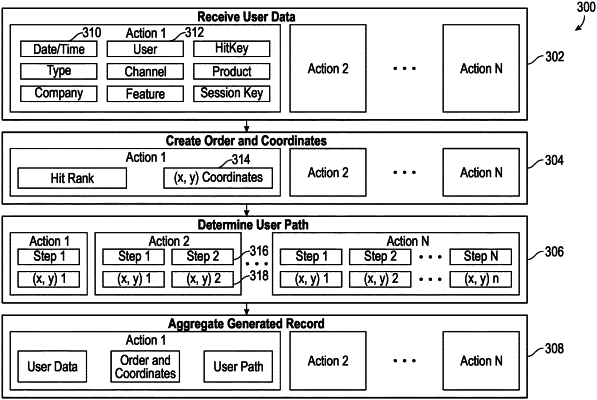| CPC H04L 43/10 (2013.01) [G06F 9/542 (2013.01)] | 20 Claims |

|
1. A computer-implemented method performed by one or more processors of a path analysis computer system, the method comprising:
generating, by the path analysis computer system, a plurality of user paths for a user session within an online environment, wherein the plurality of user paths is generated based on usage data, the usage data comprising a plurality of events corresponding to interactions with an online user interface of a computing device, wherein each of the user paths in the plurality of user paths comprises a starting event and a final event;
determining, by the path analysis computer system, a preferred user path between a selected starting event and a selected final event, wherein the preferred user path is determined by:
determining, by the path analysis computer system, a likely subsequent event in a likely user path between the selected starting event and the selected final event; and
comparing, by the path analysis computer system, the likely subsequent event in the likely user path to the plurality of events in one of the generated user paths having the same starting event and final event, including determining any differences between the plurality of events in the generated user path and the likely subsequent event in the likely user path;
determining, by the path analysis computer system, coordinates for one or more of the plurality of events based on the usage data; and
generating, by the path analysis computer system, a map based on the plurality of events, including plotting at least one of the plurality of events based on the coordinates.
|